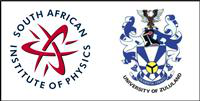Speaker
Apply to be<br> considered for a student <br> award (Yes / No)?
No
Would you like to <br> submit a short paper <br> for the Conference <br> Proceedings (Yes / No)?
Yes
Abstract content <br> (Max 300 words)
There are 40 millisecond pulsars (MSPs) in the second pulsar catalogue of the Fermi Large Area Telescope (LAT). This pulsar subpopulation is unique owing to their relatively small magnetospheres. This may result in radio emission originating at higher altitudes and covering larger solid angles than in the case of their younger counterparts. MSP magnetic fields may also be more complex and their masses larger. Furthermore, these MSPs exhibit some profile patterns that are not seen in younger pulsars. We modelled the MSP radio and gamma-ray light curves (LCs) using outer gap (OG), two-pole caustic (TPC), low-altitude slot gap, and pair-starved polar cap geometric models, combined with a semi-empirical conal radio model. We find that no model fits all cases, with the OG and TPC models providing best fits for comparable numbers of MSP LCs. We find a broad distribution of best-fit inclination angles as well as a clustering at large observer angles. The OG model furthermore seems to require relatively larger inclination angles, while the TPC model hints at an inverse trend between the inclination angle and pulsar spin-down luminosity. We expect these tentative trends to strengthen with the accumulation of more data, and we will discuss their significance in the context of our geometric models. Future work will include the implementation of new magnetic field geometries as well as higher-altitude and more complex radio emission patterns.

